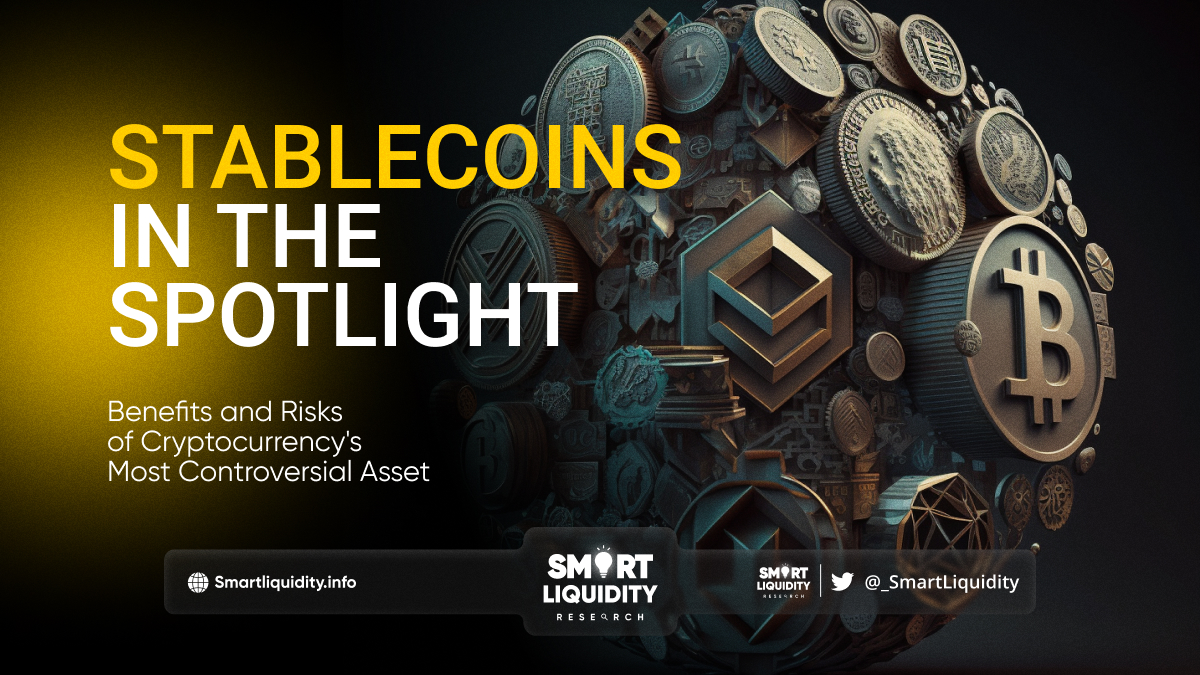To Stable or Not to Stable: How Stablecoins Can Benefit and Harm Your Portfolio


Stablecoins have become a popular option for cryptocurrency investors seeking a more stable portfolio. But are they the right choice for you? In this article, we explore the benefits and risks of stablecoins and help you make an informed decision on whether to include them in your investment strategy.
The Rise of Stablecoins: How They’re Revolutionizing the Cryptocurrency Market
Stablecoins are the new kids on the block in the world of cryptocurrencies, and they’re rapidly gaining popularity among investors and traders alike. Unlike traditional cryptocurrencies such as Bitcoin and Ethereum, which are known for their extreme price volatility, stablecoins are designed to maintain a stable price that’s pegged to a traditional currency or asset. This makes them a much more attractive option for those who are looking for a more stable investment that’s less prone to wild swings in value.
One of the main reasons for the rise of stablecoins is their potential to address one of the biggest challenges facing the cryptocurrency market: volatility. Cryptocurrencies are notoriously volatile, with prices capable of rising or falling by double-digit percentages in a single day. Stablecoins, on the other hand, offer a level of price stability that’s not possible with traditional cryptocurrencies. This makes them an appealing option for traders and investors who want to avoid the risk of losing money due to sudden price drops or market crashes. In addition, stablecoins can be used as a hedge against the volatility of other cryptocurrencies, allowing traders to mitigate risk and protect their investments. As a result, stablecoins have quickly gained a foothold in the cryptocurrency market, and are likely to continue to grow in popularity as more investors seek out stable investment options.
The Benefits of Stablecoins: Why They’re a Game-Changer for Cryptocurrency Investors
✅Price Stability: Stablecoins are designed to maintain a stable price that’s pegged to a traditional currency or asset, such as the US dollar or gold. This makes them a much more stable investment option than traditional cryptocurrencies like Bitcoin or Ethereum, which are known for their volatility.
✅Reduced Risk: Stablecoins are less risky than traditional cryptocurrencies, as they are not subject to the same extreme price fluctuations. This makes them a more attractive option for risk-averse investors who want to minimize their exposure to market volatility.
✅Increased Liquidity: Stablecoins are often more liquid than traditional cryptocurrencies, as they can be used for a variety of purposes, including trading, lending, and payments. This makes them a more versatile investment option that can be used in a wide range of market conditions.
✅Greater Accessibility: Stablecoins are often more accessible than traditional cryptocurrencies, as they can be purchased using traditional payment methods like credit cards or bank transfers. This makes them a more accessible investment option for people who are new to cryptocurrency or who don’t have access to cryptocurrency exchanges.
✅Regulatory Compliance: Many stablecoins are designed to comply with existing regulations, making them a more attractive option for institutional investors and businesses that need to adhere to strict compliance standards.
The Risks of Stablecoins: What Every Investor Should Know
❌Counterparty Risk: Stablecoins are often issued by third-party companies or organizations, which means that investors are exposed to counterparty risk. If the company or organization that issues the stablecoin goes bankrupt or otherwise fails, investors could lose their entire investment.
❌Lack of Transparency: Some stablecoins are not transparent about how they maintain their price stability, which can make it difficult for investors to evaluate the risks associated with the stablecoin.
❌Regulation Risk: Stablecoins are often subject to regulation, and changes in regulations could have a significant impact on their value. If a stablecoin is not compliant with existing regulations, it could be shut down or face other legal consequences.
❌Market Risk: While stablecoins are designed to maintain a stable price, they are still subject to market risk. If there is a sudden market downturn, the value of the stablecoin could still decline.
❌Liquidity Risk: While some stablecoins are highly liquid, others may have limited liquidity, which can make it difficult for investors to buy or sell the stablecoin in a timely manner.
Stablecoin Comparison: Which One is Right for You?
Stablecoin | Issuer | Peg | Market Cap | Advantages✅ | Disadvantages❌ |
Tether (USDT) | US Dollar | $60 billion | Widely accepted, high liquidity | Centralized, controversial history | |
USD Coin (USDC) | US Dollar | $12 billion | Regulated, transparent | Centralized, limited adoption | |
Dai (DAI) | US Dollar | $2 billion | Decentralized, stable | Limited adoption, complex system | |
Binance USD (BUSD) | US Dollar | $10 billion | Backed by major exchange, high liquidity | Centralized, limited adoption | |
TrueUSD (TUSD) | US Dollar | $1 billion | Regulated, transparent | Centralized, limited adoption |
As you can see, each stablecoin has its own unique advantages and disadvantages. Tether is the most widely accepted and has high liquidity, but has a controversial history and is centralized. USD Coin is regulated and transparent, but is also centralized and has limited adoption. Dai is decentralized and stable, but has a complex system and limited adoption. Binance USD is backed by a major exchange and has high liquidity, but is also centralized and has limited adoption. TrueUSD is regulated and transparent, but is also centralized and has limited adoption.
The Future of Stablecoins: What Lies Ahead
As the use of stablecoins continues to grow, many experts predict that they will play an increasingly important role in the cryptocurrency ecosystem. Some predict that stablecoins could eventually become the dominant form of cryptocurrency, with a market cap that surpasses that of traditional cryptocurrencies like Bitcoin and Ethereum. Others believe that stablecoins will become an important bridge between the traditional financial system and the world of cryptocurrency, making it easier for individuals and institutions to participate in the crypto economy.
However, there are also challenges that the stablecoin market will need to overcome in order to reach its full potential. One of the biggest challenges is regulatory scrutiny. As stablecoins become more popular, regulators are paying closer attention to how they operate and how they are used. Some regulators have already taken action to restrict the use of stablecoins in certain jurisdictions. In addition, stablecoins may also face competition from new forms of digital currency, such as central bank digital currencies (CBDCs), which are being developed by governments around the world. As the stablecoin market continues to evolve, it will be important for developers and investors to stay ahead of the curve and adapt to new regulatory and technological developments in order to ensure the long-term viability of stablecoins as a valuable asset class.
Final Thoughts
When choosing a stablecoin, it’s important to consider your own investment goals and risk tolerance. Each stablecoin has its own unique characteristics that may be more or less suited to your individual needs. By carefully evaluating the advantages and disadvantages of each stablecoin, you can make an informed decision about which one is right for you.





